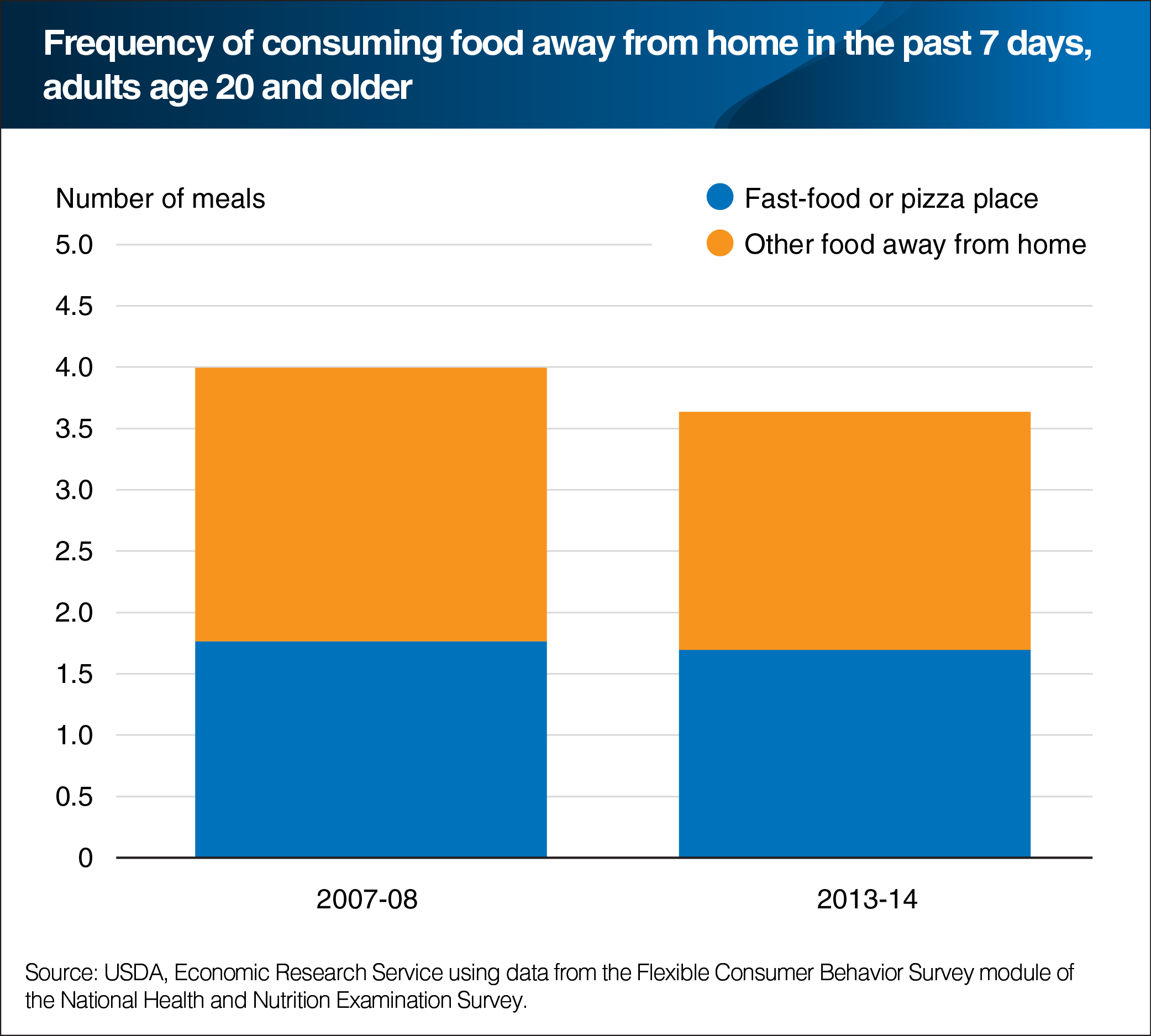Survey data point to Americans eating out less often in 2013-14 compared with 2007-08
- by Brandon J. Restrepo
- 10/26/2017

ERS developed the Flexible Consumer Behavior Survey (FCBS) module, which, starting in 2007, has been part of the National Health and Nutrition Examination Survey. The FCBS questions are designed to collect data on U.S. consumers’ dietary knowledge, attitudes, and habits, including their eating out habits. ERS researchers used FCBS data to get a sense of how often Americans purchase or acquire meals prepared away from home in places such as restaurants, fast-food places, food stands, grocery stores, and vending machines. In 2013-14, adults age 20 and older reported that they purchased or acquired an average of 3.6 away-from-home meals in the past 7 days—down from 4.0 meals in 2007-08. This decline in eating out could potentially reflect tighter food budgets due to the Great Recession (December 2007 to June 2009) and the slow economic recovery afterwards. The number and share of away-from-home meals reported as coming from a fast-food or pizza place was about the same in both periods. Data for this chart are from the Food Consumption & Demand topic page on the ERS Web site, updated on September 18, 2017.
We’d welcome your feedback!
Would you be willing to answer a few quick questions about your experience?

